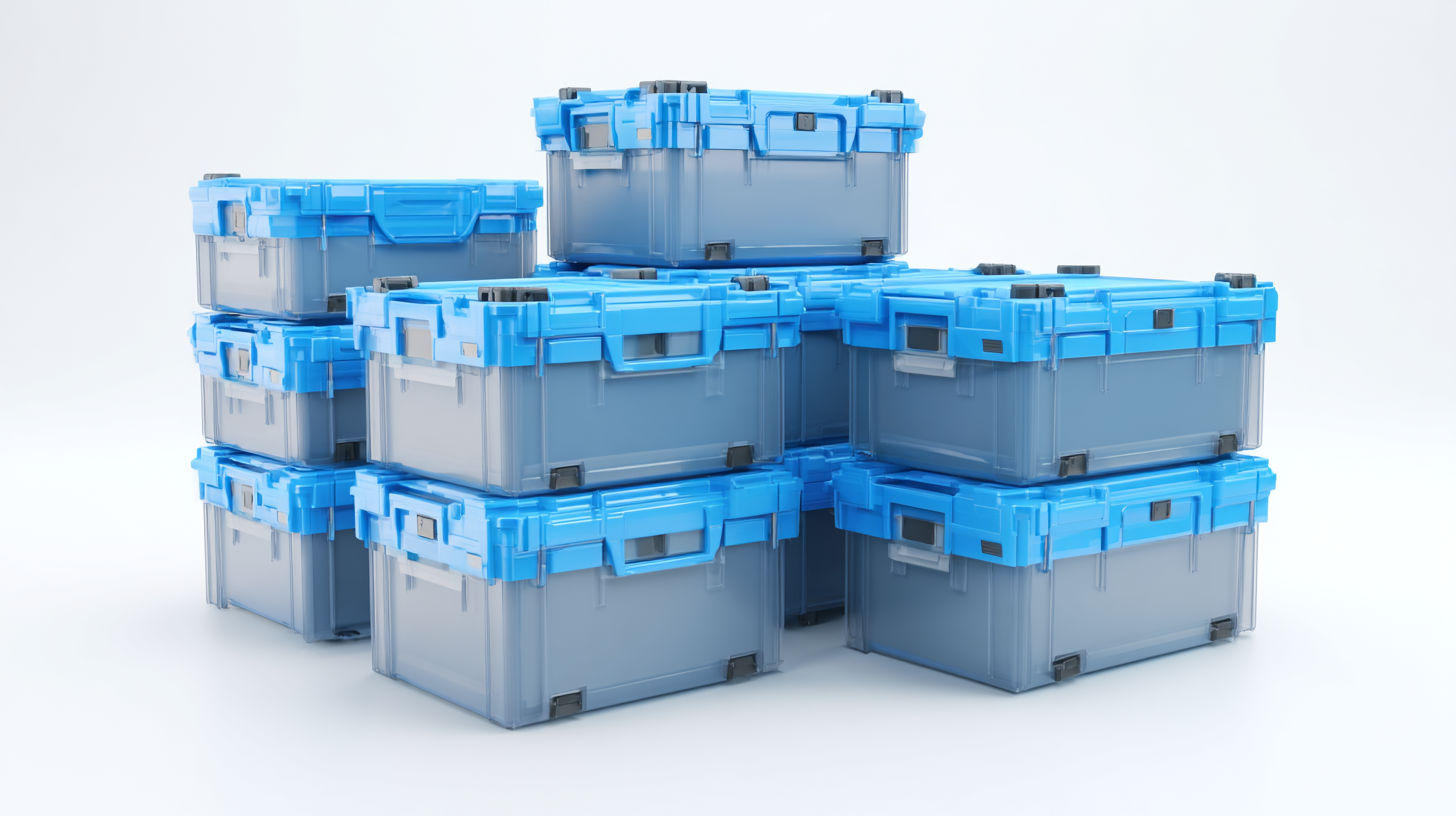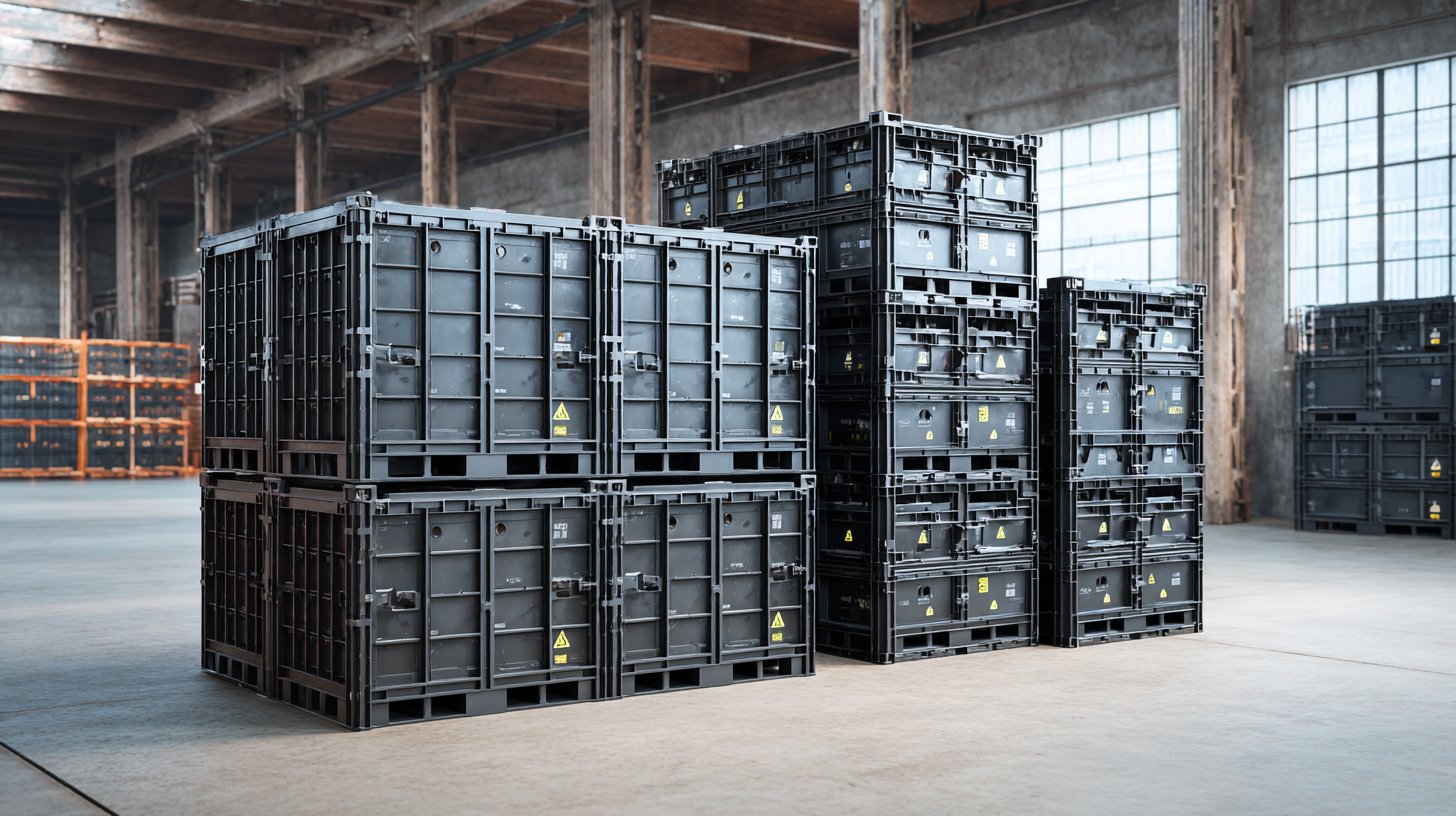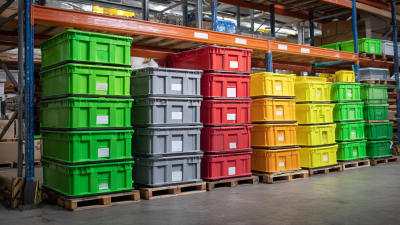Welcome to this website!

In today’s fast-paced business environment, optimizing operational efficiency is paramount for success. One innovative solution is the use of stackable containers, which play a crucial role in enhancing storage capabilities and streamlining logistics. According to a recent report by the Material Handling Industry of America, effective material handling can reduce costs by up to 30% and increase productivity by 35%. By implementing stackable containers, businesses can significantly enhance their warehouse organization and maximize the use of vertical space, which is often underutilized. This transition not only fosters a safer working environment by reducing clutter and the risk of accidents but also accelerates the packing and shipping processes. As companies strive to keep pace with growing demands, understanding how to fully leverage stackable containers becomes essential for maintaining a competitive edge in the marketplace.

Stackable containers are revolutionizing supply chain efficiency by enabling businesses to optimize space and streamline operations. According to a report by the Material Handling Industry of America (MHIA), utilizing stackable containers can lead to a 30% increase in warehouse space utilization. This is particularly vital in today's fast-paced logistics environment, where efficient use of space can directly translate to cost savings and improved service levels.
Moreover, stackable containers facilitate better inventory management. A study by Logistics Management found that businesses employing stackable solutions experienced a 20% reduction in order picking times. By allowing for more organized stacking and easy access, these containers help reduce the risk of errors and improve overall productivity. Additionally, their versatility for handling various products means that businesses can adapt to changing demands without significant overhauls to their supply chain processes.
Ultimately, investing in stackable containers not only enhances operational efficiency but also contributes to a more sustainable logistics strategy by reducing the environmental impact of excess packaging and transportation.
Stackable containers have emerged as a crucial component in modern warehouse operations, providing a solution to space optimization challenges faced by many businesses. According to recent industry analyses, the global plastic crates market is projected to reach a significant valuation, driven by the increasing demand for effective storage solutions. These containers, available in various materials such as polyethylene and polypropylene, can greatly enhance the usability of vertical space in warehouses, allowing companies to store more products in a smaller footprint.
Incorporating stackable containers not only maximizes space but also improves operational efficiency. Research indicates that businesses utilizing these containers experience up to a 30% increase in storage capacity compared to traditional non-stackable options. This efficiency translates into reduced overhead costs and enhanced workflow, as employees can locate and access products with greater ease. Furthermore, stackable containers are designed to be robust and lightweight, making them an ideal choice for businesses looking to streamline their supply chain processes. As companies increasingly acknowledge these benefits, the adoption of stackable containers is expected to grow, making them a staple in effective warehouse management strategies.
| Container Type | Height (ft) | Width (ft) | Length (ft) | Volume (cu ft) | Stacking Capacity (lbs) | Efficiency Gain (%) |
|---|---|---|---|---|---|---|
| Type A | 5 | 3 | 4 | 60 | 1500 | 35 |
| Type B | 6 | 3.5 | 5 | 83.75 | 1800 | 40 |
| Type C | 4 | 2.5 | 3.5 | 35 | 1200 | 30 |
| Type D | 7 | 4 | 6 | 168 | 2200 | 45 |
 In today's competitive market, minimizing shipping costs is essential for maintaining profitability. One effective solution is the utilization of stackable containers, which not only optimize space but also streamline logistics. By employing a data-driven approach, businesses can analyze shipping patterns and container designs that best suit their operational needs. The ability to stack containers maximizes loading efficiency, allowing companies to transport more goods in fewer trips, ultimately reducing freight costs.
In today's competitive market, minimizing shipping costs is essential for maintaining profitability. One effective solution is the utilization of stackable containers, which not only optimize space but also streamline logistics. By employing a data-driven approach, businesses can analyze shipping patterns and container designs that best suit their operational needs. The ability to stack containers maximizes loading efficiency, allowing companies to transport more goods in fewer trips, ultimately reducing freight costs.
Additionally, the strategic use of stackable containers can lead to significant savings in packaging and storage. When products are stored in container systems that can be stacked, companies can utilize warehouse space more effectively, decreasing the overall footprint required for inventory. This not only cuts down on storage expenses but also enhances inventory management, making it easier to track and access products. By leveraging data analytics, businesses can identify the most space-efficient stacking arrangements, ensuring that each shipment is optimized for cost and efficiency.
In today's fast-paced business environment, organizing stackable containers effectively can greatly enhance operational efficiency. According to a report from the Council of Supply Chain Management Professionals, proper organization can reduce retrieval times by up to 30%, directly impacting productivity and overall throughput. By implementing a systematic approach to stacking and categorizing containers, businesses can minimize confusion and streamline processes.

One best practice involves color-coding containers based on their contents or their purpose within a workflow. Research from the International Journal of Operations & Production Management indicates that visual management techniques can improve retrieval accuracy by around 25%. Additionally, labeling containers with clear, concise information about their contents encourages faster access and reduces the risk of errors during inventory checks.
Furthermore, utilizing vertical space effectively by incorporating shelving systems or racks specifically designed for stackable containers can maximize storage capacity. A study published by the Warehousing Education and Research Council found that optimized storage solutions can increase warehouse efficiency by up to 40%. By adopting these best practices, businesses can ensure that their operations are as efficient and organized as possible.
Stackable containers have become a vital asset in enhancing operational efficiency for many companies. By allowing businesses to optimize storage space and streamline logistics, these containers have proven to significantly boost productivity. To measure these gains, various companies have shared compelling case studies that showcase remarkable improvements in workflow and inventory management.
One effective strategy is to adopt a systematic approach to containerization. Start by categorizing products based on size and frequency of use. This practice not only maximizes vertical and horizontal space but also minimizes time wasted in searching for items. Additionally, integrating technology such as inventory management systems can create real-time visibility into stock levels, further enhancing operational efficiency.
Another important tip is to encourage employee training on the best practices for using stackable containers. When workers are well-informed about the layout and storage methods, they can navigate and retrieve items swiftly. This not only reduces downtime but also fosters a culture of efficiency that can have lasting benefits on overall productivity, as illustrated by the success stories of numerous organizations utilizing these smart solutions.






